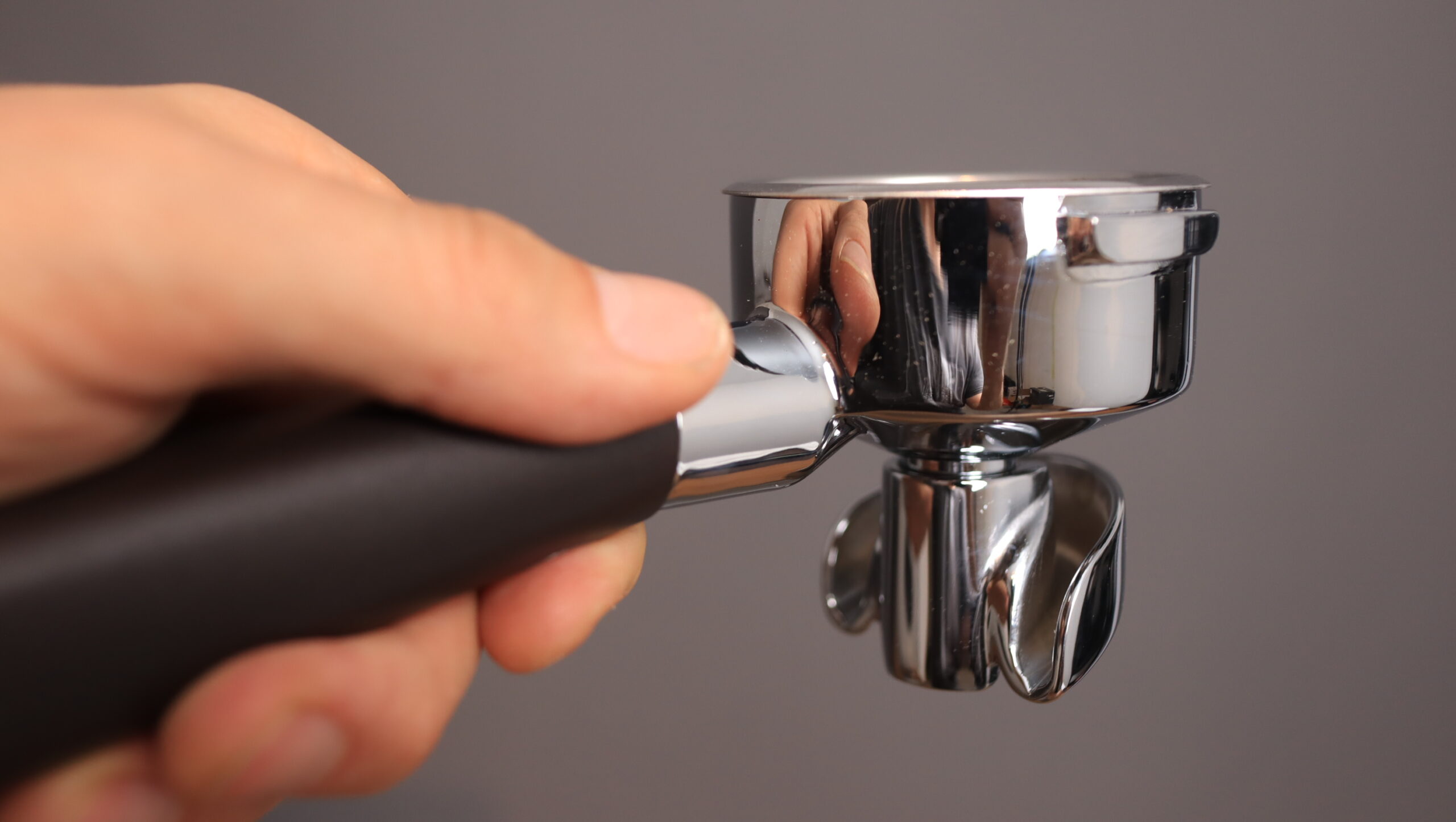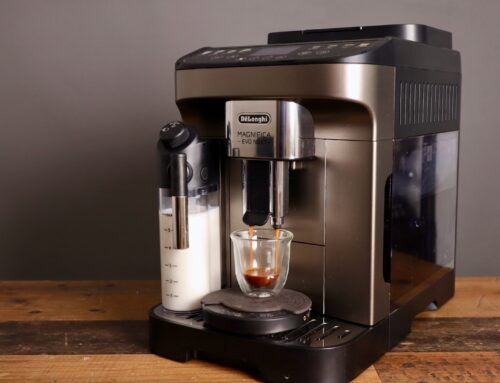Lelit PL81T Grace Espresso Machine Review
Introducing the Lelit Grace
Have you been looking for a beautiful espresso machine, with an integrated PID, adjustable OPV, and manometer? The Lelit Grace (PL81T) offers these features and more, and that at a very humane price, around $799. In this review, we will look at the Grace, her aesthetics and haptics, espresso and steam performance, and last but not least, her pros and cons.
For all who don’t know, Lelit is a private Italian brand, that has been hand making espresso and even steam machines in their factory in Castegnato for quite some time.
Lelit Grace PL81T vs Victoria PL91T
As it turns out, there were two models, the Grace and Victoria. The Victoria is the bigger sister of the Grace, with a 58mm portafilter instead of 57mm, and it has a larger boiler, too. So the Victoria has a 300ml boiler compared to the Grace’s 250ml boiler.
It seems that the Victoria has displaced the Grace, as the Grace seems to be no longer available. I guess people just want 58mm. Find the Victoria below:
The Looks and Features of the Grace
I just have to say, “man, that Grace is a looker!” The aesthetics of the Grace is really what first drew me to the machine, and the included PID, adjustable OPV, and attractive price are what made me pull the trigger.
Let’s start with the casing. The Grace uses a beautiful brushed stainless steel casing, which looks good at various angles. I like looking at the machine, even when it’s off. It’s a tall machine too, to be able to accomodate larger cups. There are three illuminated control buttons on the left side of the front panel, for starting the extraction, for heating up to steam temperature, and for dispensing hot water. On the right is a handsome manometer, which is backlit, only during an extraction. Below the manometer is an OLED PID screen, which also allows the setting of pre-infusion and steam temperature. Finally, the Lelit logo is printed on a distended spot in the middle of the front plate, and the new logo is stamped into the back. Very handsome, indeed.
Important Accessories
I find it imperative to use a proper basket, a good bottomless portafilter, and a well fitting tamper, to really get the best results with this, or any machine. The IMS basket provides probably the largest difference in the cup, of all the accessories you can buy. Check them out below:
Build Quality
I would like to talk about the build quality, of this machine. Lelit is located in northern Italy, and their machines are both designed, and hand built in their italian factory. This is kind of reflected in their build. It is not built with side panels that stick together via clips, but rather with fins that slide into grooves, and with screws to hold the panels together. Talking about the panels, the edges have a slight edge to them, so that you might want to be careful when taking the machine apart. I ended up scratching our countertop, as I was not careful. So, while the build quality is by no means perfect, I do appreciate that it is hand made, and considering the attractive price of this machine, I can accept that fact. Finally, the components used seem to me to be of good quality, and that is what’s important.
PID and OPV Adjustment
The LCC on the Grace, with its tactile buttons is a breeze to set up. Simply hit the minus button to enter the menu, then hit the plus then minus buttons to adjust the setpoint temperature. One can also adjust the steam temperature (I have mine set at 140 degrees C), as well as turn on or off the pre-infusion.
Changing the OPV pressure however is a bit of a nightmare. My machine came with 11 bar, as tested with the included blind disc. So, I knew I wanted to get down to between 8 and 9 bar, to get a sweeter, more well rounded shot. To do this, one has to remove the top panel, the back surround, and the middle panel. That makes 9 screws in total, and just takes about 5 minutes. Then, you have to pull the tube off the top of the OPV and VERY carefully adjust the screw. BE CAREFUL here, as the OPV is made of brass, and it chips easily! You need to get exactly the right fitting slotted screwdriver, to get the screw to turn. I ended up heating up the OPV with a lighter, to get the adhesive on the threads to loosen, which helped. I ended up turning slightly more than a 1/2 turn counter clockwise, to end up at 8.5 bar. Finally, I cleaned up the OPV, and let it pump some water out, to make sure no shrapnel remained.
Performance: Espresso and Milk Froth
To be honest, out of the box I was disappointed with the espresso performance. It seemed thin, without body, and somehow bitter and under extracted at the same time. I did two things, to end up with sweet and velvety espresso. Number 1, I ordered a precision 57mm IMS basket, which made a big difference in the body. Then, I adjusted the OPV from 11 bar max, down to 8.5 bar max, which really brought the sweetness to the extraction, and made the espresso well-rounded. Now we’re talking, and now it’s time to experiment with temperature.
The steaming performance on the other hand is ok. If I were to wait for the boiler to fully heat up to 140 degrees, it takes about 60 seconds – a long time. Instead, I wait about 30 seconds, purge, and get going with steaming. This way, I do get good milk foam, but there’s one problem. The steam valve closes too slowly. This causes the milk foam at the top of the pitcher to get disrupted, which sucks. The only remedy I have for this is to swirl vigorously, or to pour from one pitcher to another, to get the milk properly incorporated. Oh and by the way, the machine auto refills the boiler, and cools back down to espresso temperature automatically. That is nice!
Pros and Cons of the Lelit Grace?
After using the Lelit Grace for a few weeks, I can say that there is a lot to like about this PID machine. Above all, I find the aesthetics very pleasing. Considering that an espresso machine sits prominently on your kitchen counter, looks are important. Another nice feature is that with the purchase of a Lelit, you are supporting a company which still produces in their homeland. I am happy to support a company who can still proudly label their product, ‘made in Italy.’ Of course from a technical standpoint, the PID is a great feature, which works well, and is easy to set up. Another great point is that the machine heats up quickly, and even the brew group is nice and hot after just 3 minutes. Finally, the top panel is quick. to remove, for easy access to the interior of the machine.
Of course this machine also has some negative points. I sure wish that the PID screen would show the actual temperature, and not just the setpoint. That is annoying, but I hope the firmware can be updated (currently at 1.14c). Also, the OPV is very hard to get at. The top, bottom and interior panels have to be removed, as well as one tube, to get at the OPV for adjustment. It would be nicer had they installed an OPV with an adjustable screw on the side. Of course the water tank is super annoying to fill up, without a funnel. But at least this time Lelit included a water level sensor – that is important! Finally, by biggest pet peeve is the steam valve. It closes so slowly, that the milk foam is affected at the end, and can suffer from the slow closing of the valve. I really wish this was just a quarter turn, on and off valve, like the Dedica has.
Pros:
- Integrated PID with tactile buttons
- Illuminated manometer!
- Quick heat up time, less than 5 minutes
- Made in Italy
- High quality internal components
- Adjustable OPV
- Lots of space for taller cups
- Great espresso when temperature and pressure are dialed in.
Cons
- PID screen shows target temperature, not actual temperature.
- Vibratory pump quite loud
- OPV a pain to access, and hard to adjust.
- Water tank access is not ergonomic
- Steam valve closes too slowly
Specifications of the PL81T:
– Dimensions: 230 mm x 270 mm x 380 mm
– 1050 Watt brass boiler
– 57mm portafilter
– PID control with high resolution OLED display
– Backlit press buttons, and backlit manometer
– 3 way solenoid valve
– Brushed stainless steel housing
– Included accessories: single, pod, and double baskets, spoon, water softener filter, cup rack.
– Made in Italy
Suggestions
The Grace is a delightful step forward in Lelit’s VIP line. It combines handsome aesthetics with a capable PID control, and adjustable OPV as well. The combination of the right temperature and pressure result in great espresso. If I could ask Lelit to change something, it would be to use an OPV that is easier to adjust, and a steam valve that closes fast. But all in all, this is a delightful machine, and I love that it’s made in Italy.
Competitors to the Lelit Grace
I am really not sure if there are many competitors to the Grace in this price bracket. I suppose the closest thing is the Profitec Go, which I hope to get a look at soon. There is also the Ascaso Steel PID line, but that is quite a bit more expensive. I will update this section, as I find comparable PID adjustable machines.
Find your Lelit PL91T Victoria here (Grace no longer available):
You are currently viewing a placeholder content from YouTube. To access the actual content, click the button below. Please note that doing so will share data with third-party providers.
More Information










